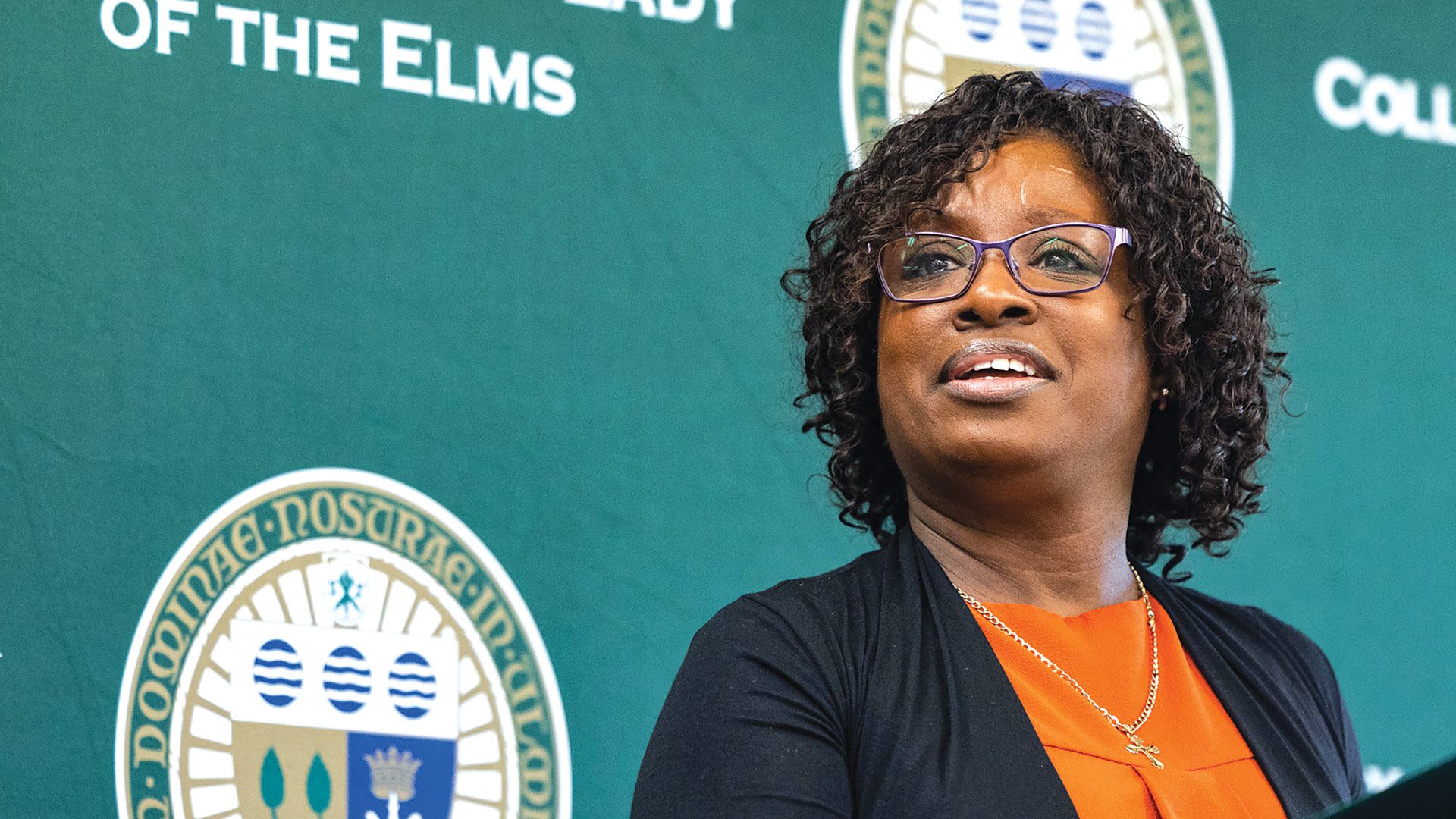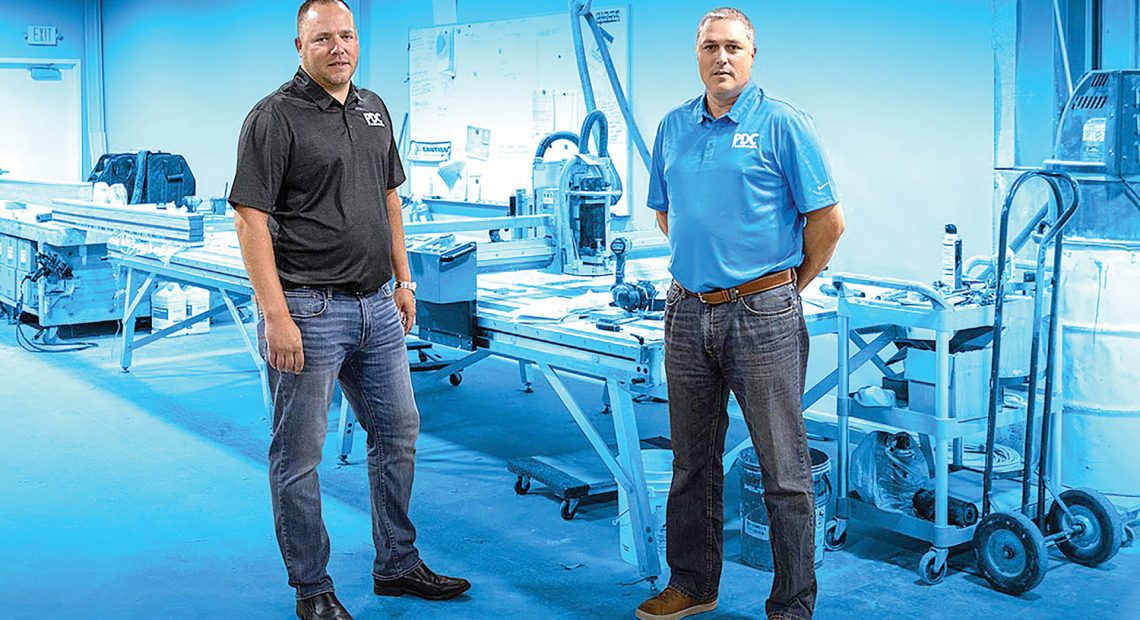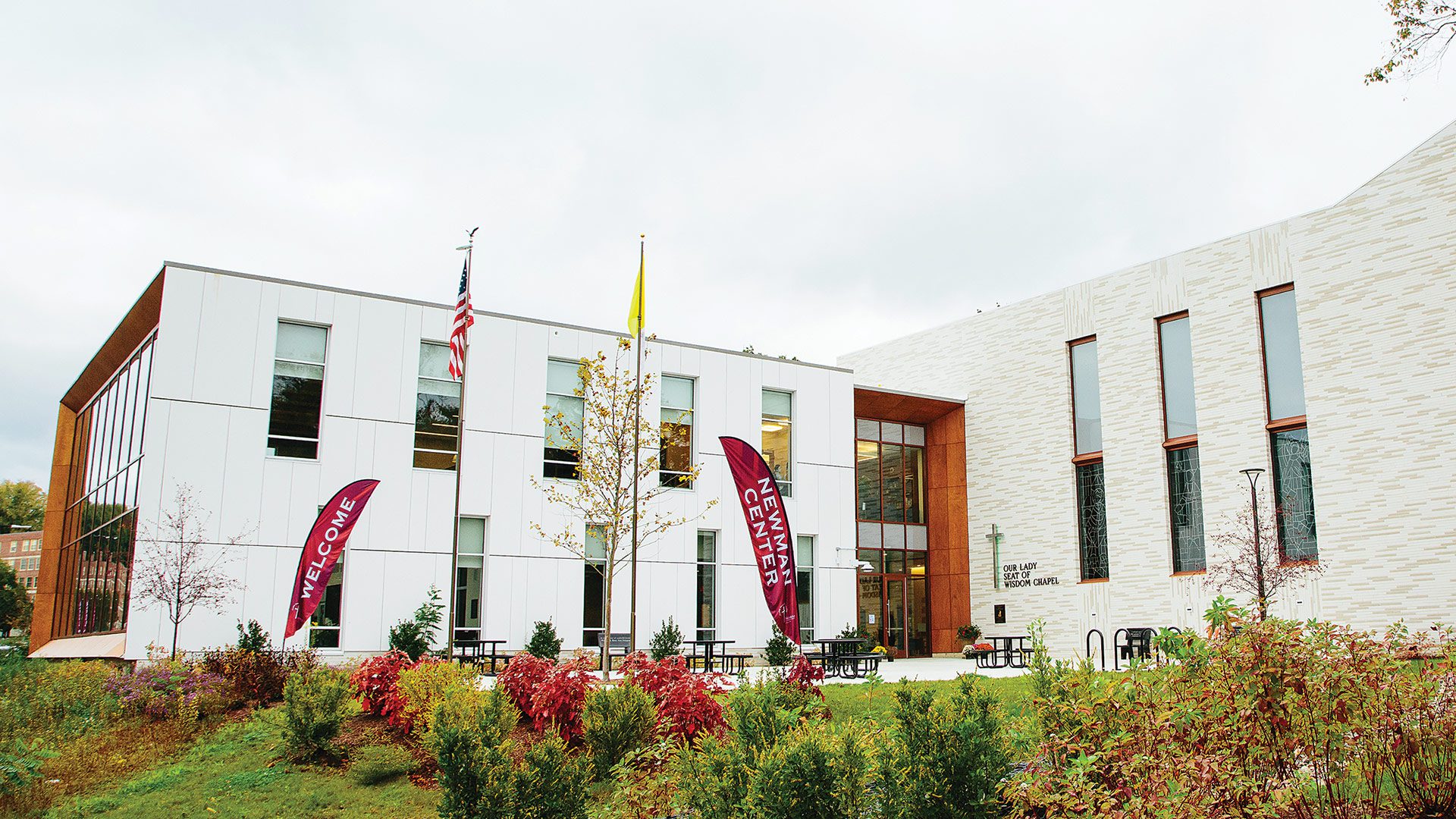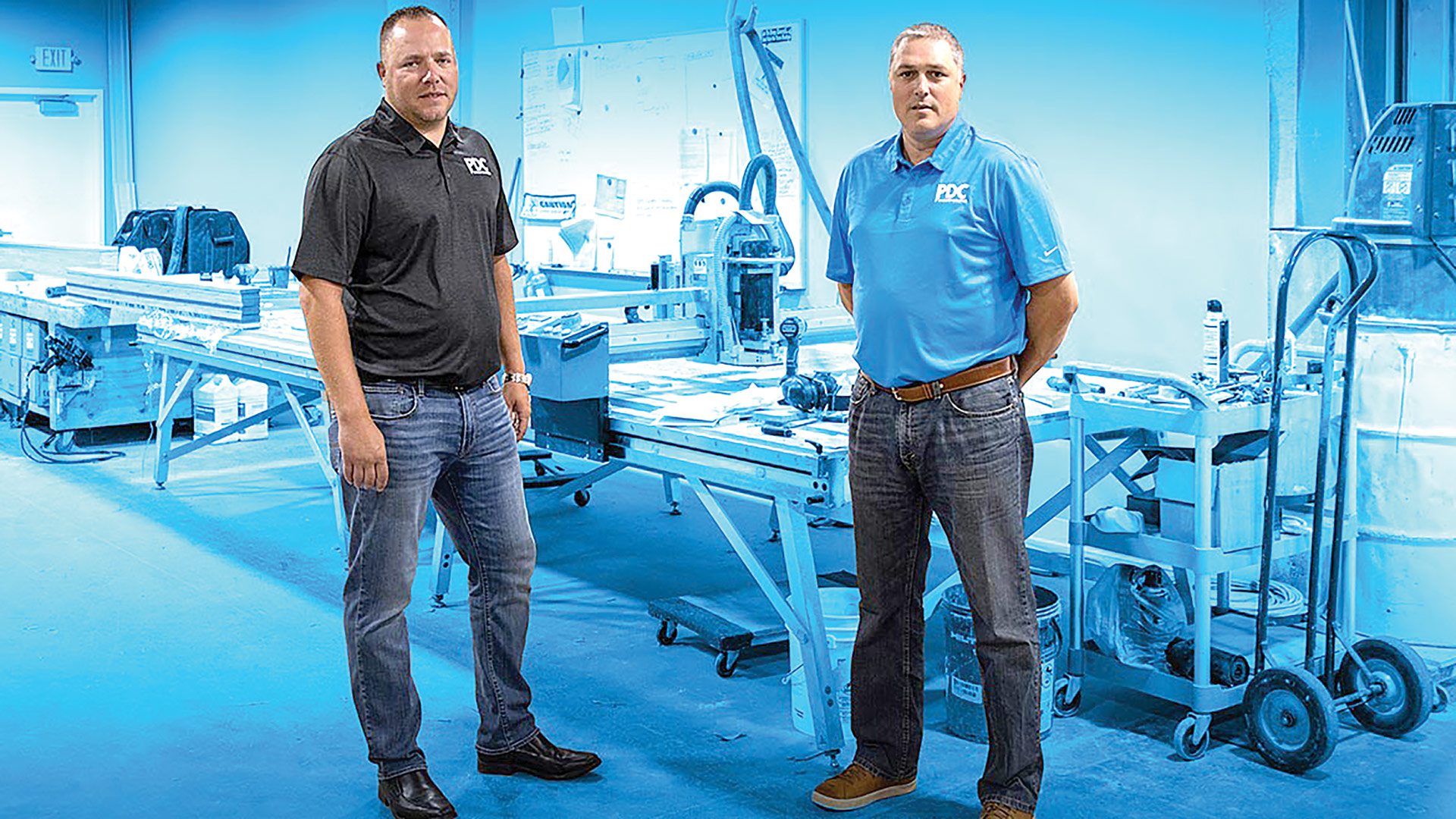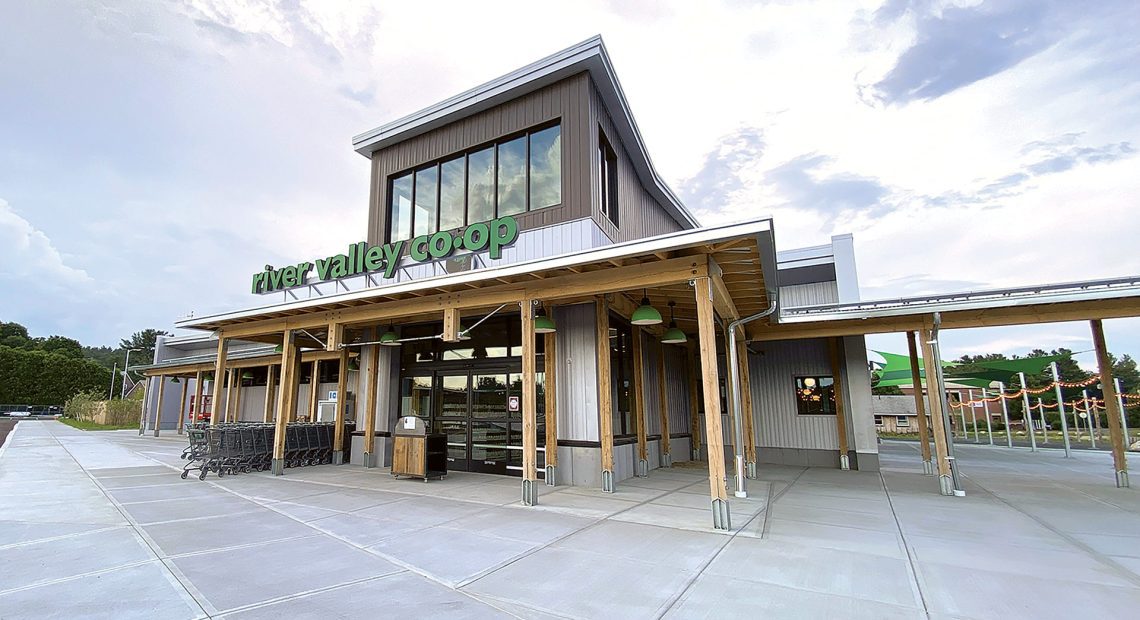Community Spotlight
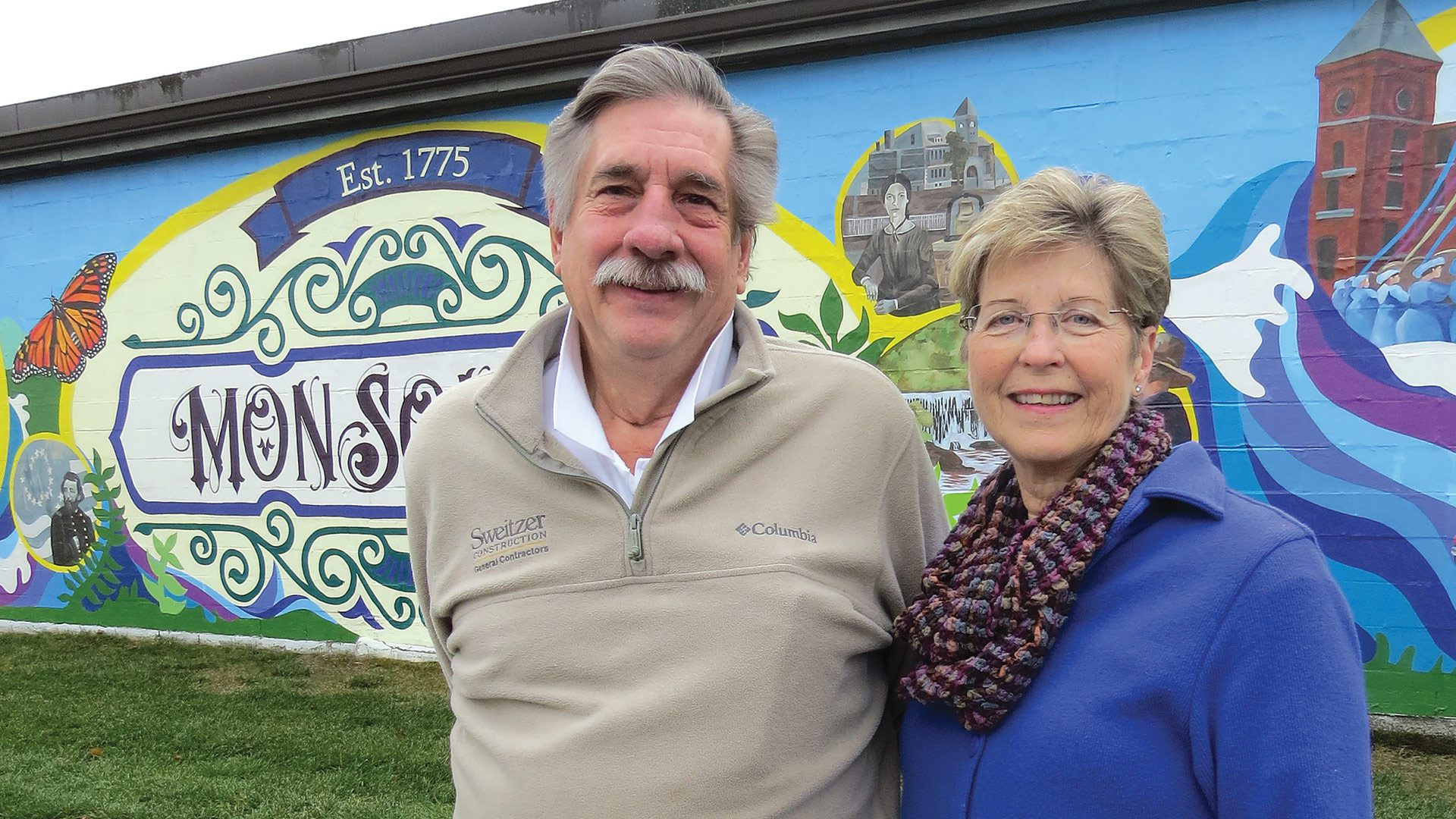
Craig and Pat Sweitzer at the recently unveiled mural in the center of Monson.
Staff Photo
“Sophisticated rural.”
That’s how Craig Sweitzer, who has lived and worked in Monson for more than 40 years now — and served on the town’s Planning Board for most of that stretch — chose to describe this community of almost 9,000 people on the eastern edge of Hampden County.
By that, he meant that this town is certainly small and rural, but, as he put it, “you don’t have to leave town to eat.”
Indeed, the community’s downtown boasts several restaurants and, at last count, three coffee shops, said Sweitzer, who, with his wife, Pat, owns and operates Sweitzer Construction, a design-build firm that specializes in medical facilities (especially dental offices) and, more recently, cannabis operations of all kinds.
Indeed, the arrival of the cannabis industry has brought work across all aspects of that sector, Sweitzer said, from dispensaries to production facilities; from testing labs to an armored-car operation in Belchertown created to handle the large amounts of cash generated by these businesses.
“After you get your feet wet in something, you master it, and it leads to more work in that area,” he said, adding that the same is true of dental offices (his firm has now built more than 200 of them), and it is now true with cannabis facilities. “And when you do design/build, you offer the whole package — the architecture, the financing, the site selection … and we’ve done the same thing with cannabis.”
The Sweitzers made Monson their home and the base for their business back in the ’80s, and they’ve watched it grow and evolve. A little.
“Monson still has its rural quality — we still don’t have a traffic light,” Craig said, adding that the town has not changed much over the past four decades, and for those who live there, this is mostly a good thing; sophisticated rural is an attractive quality, one that many are seeking, especially post-pandemic.
Indeed, the town has seen a slight rise in population in the wake of COVID and the manner in which it prompted some living in large population centers to seek more rural areas in which to both live and work.
“Post-COVID, flexible work and hybrid models became very attractive, and so did communities like Monson, because obviously it costs much less to buy a house out here then it does in the Boston area,” said Dan Moriarty, president and CEO of Monson Savings Bank, who grew up in town and thus admitted to some bias, adding that, if the proposed east-west rail project becomes reality, Mosnon and communities like it will become even more attractive to those looking to work in Boston but not necessarily live there.
“There’s still that sense of small-town feel and community here in Monson, and that’s very attractive to many people,” he went on. “It’s a nice place to live, and I get the best of both worlds because I work there as well.”
He said Monson is close enough from Springfield and Worcester to be an attractive landing spot for those working in those metropolitan areas. Meanwhile, it has its own economy in a way, with those aforementioned restaurants and coffee shops, a supermarket, several service businesses, and some ventures that accentuate its rural personality while also making it a destination.
That list includes Silver Bell Farms, a multifaceted enterprise that features everything from Christmas-tree sales (although not this year as the farm builds up inventory for the future) to many different kinds of events, to a new lighting display called Silver Bell Nights.
“There’s still that sense of small-town feel and community here in Monson, and that’s very attractive to many people.”
Michael Moore, who runs the operation with his wife, Laura, said Silver Bell Nights is an intriguing addition to a portfolio of events and attractions that brings more than 50,000 people to the farm each year, with activities running year-round and especially in the fall and then around the holidays.
“This is something we’re really excited about — it’s a dazzling outdoor lighting display,” he told BusinessWest, adding that the lights were turned on amid considerable fanfare on Nov. 18, and the show will go on until the new year. “We’re looking forward to many new visitors discovering the farm and all that we have here.”
For this the latest installment of its Community Spotlight series, BusinessWest visited Monson to get a feel for what sophisticated rural is all about.
The Nature of Things
Craig Sweitzer said that, during his long period of service on the Planning Board, the largest housing project to come before that body has been a subdivision of no more than 12 homes.
“Monson is quite hilly, and we have a lot of land that’s tricky to build on,” he said, adding that this topography helps explain why, unlike some of its neighbors, and especially Belchertown, it has not seen large-scale residential development.
What it has seen is slow but continuous growth, one or two homes at a time, on existing roads.
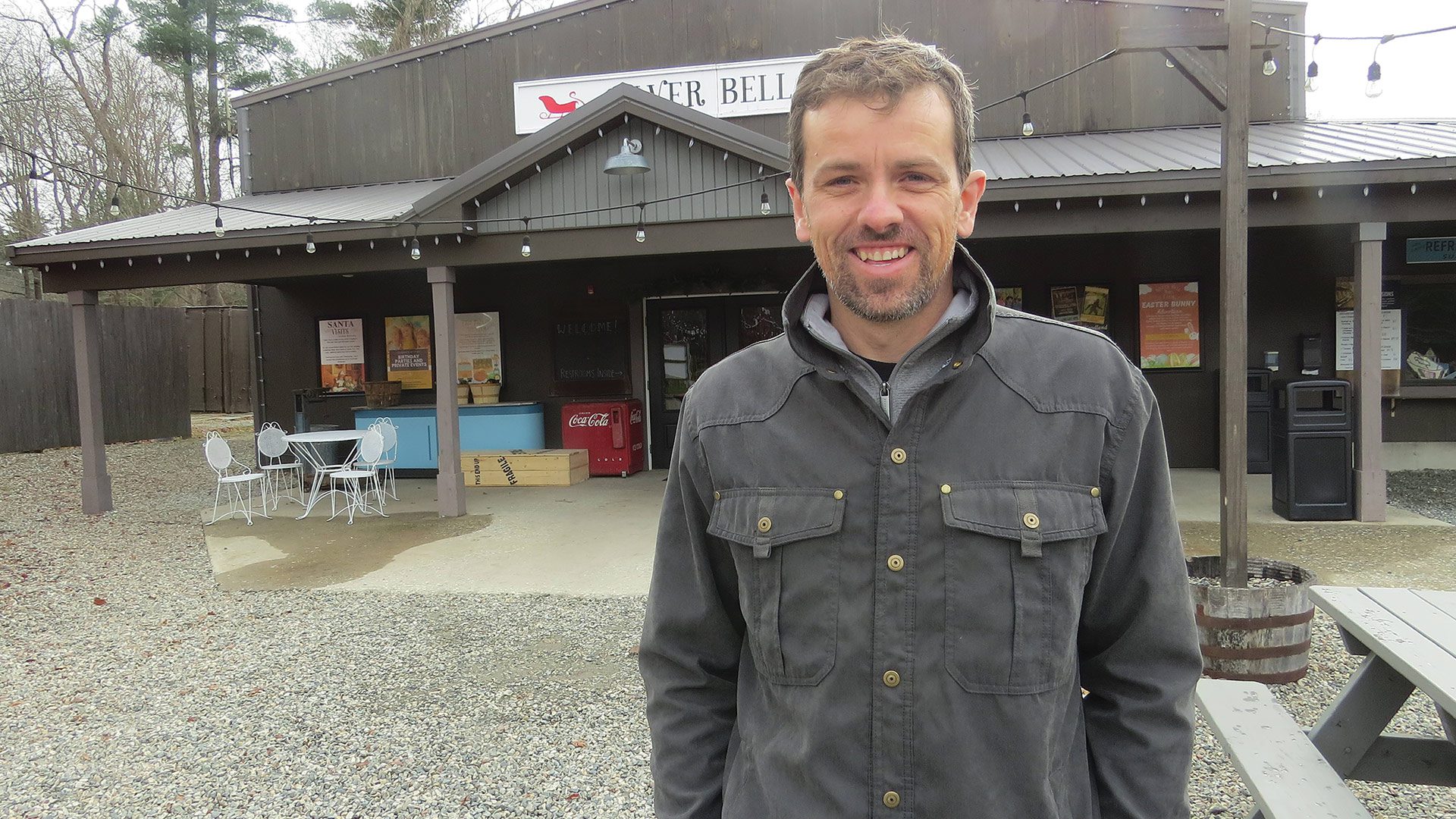
Michael Moore says Silver Bell Nights is an exciting new addition to what has become a year-round destination.
Staff Photo
“Although there are no massive subdivisions, there’s always a steady flow of new lots being created from existing road frontage,” Sweitzer explained, adding that any growth has been incremental and not (like Belchertown) explosive.
What the new residents encounter, and what those already living there thoroughly enjoy, is a town that’s both isolated and accessible at the same time, one with a small yet thriving downtown, a lively arts community, some intriguing new businesses, and nature.
“There’s a lot here … it’s a quiet, vibrant town with its own personality,” said Pat Sweitzer as she walked with BusinessWest on Main Street. “There’s a lot to like here.”
All of this is captured in, and manifested in, a mural adorning the wall of Adams Hometown Market on Main Street. The byproduct of a project led by local artists Melissa Stratton-Pandina and Shara Osgood and unveiled in September, the mural is titled “Past, Present and Future.” It depicts town landmarks; some of its history, including its granite quarries and involvement in the Civil War; and rural nature — there’s an image of a mountain lion that has become part of town lore, said the Sweitzers, who believe they’ve seen the cat.
The mural, created with large amounts of feedback from the community, effectively tells the story of a town that celebrates its past — including the recent past and a still-ongoing recovery from the June 2011 tornado that roared through Main Street — as well as its present.
And there is much to celebrate, including a high quality of life; a stable, still-evolving downtown; a vibrant arts community thanks to the ongoing efforts of the Monson Arts Council; annual gatherings such as Summerfest and a popular food-truck festival; and what both Moriarty and the Sweitzers called an entrepreneurial spirit that has yielded a number of intriguing new business ventures in recent years.

Dan Moriarty says the broad goal in Monson is to attract new business while maintaining the community’s rural look, feel, and personality.
Staff Photo
Overall, the business community is quite diverse, said Moriarty, and includes many ventures in the broad realm of tourism and hospitality. These include the restaurants and coffee shops downtown; small bakeries and specialty food producers, such as Cookies by Ray and Happy Hen Farmstand, which sells everything from eggs (hence the name) to a variety of baked goods; and agriculture-related businesses such as Echo Hill Orchards and Winery, Bryson’s Maple Syrup, and Silver Bell Farms, a relatively recent addition that continues to evolve.
Indeed, what started as a Christmas-tree farm roughly a decade ago has become a site for events and activities year-round, said Moore, listing everything from private events such as birthday parties to an Easter egg hunt, Christmas in July, a fall corn maze, barrel-train rides, tractor-pulled wagon rides, and even interactive theater productions.
There are plenty of holiday-season happenings and programs as well, including Santa story time, wreath decorating, and a farm store that sells everything from Christmas ornaments to cider donuts.
The big addition this year is Silver Bell Nights, the holiday light experience that features a number of different displays throughout the property.
Monson at a glance
Year Incorporated: 1775
Population: 8,865
Area: 44.8 square miles
County: Hampden
Residential Tax Rate: $15.86
Commercial Tax Rate: $15.86
Median Household Income: $52,030
Median Family Income: $58,607
Type of Government: Select Board, Open Town Meeting
Latest information available
Moore said the initiative represents a sizable investment, but one that will make Silver Bell more of a holiday destination — and tradition — for area residents, and a vehicle for continued growth at the farm.
Moriarity said Monson’s challenge moving forward — and it’s the same challenge facing many smaller towns — is to promote growth of the business community while maintaining the rural quality that makes it so attractive.
“Like most small towns, we try to be open-minded,” he told BusinessWest. “I’m very passionate and hopeful for continual pro-business decisions in town, where we can bring in some small-business opportunities for people, because I think that, for the town to be viable, we must be open to new business opportunities, while at the same protecting the open space and beautiful landscape the town has.”
Getting a Feel for It
Getting back to that mural, it tells a story — and it is quite a story.
A story of a community that is continually looking for ways to build on an already-attractive landscape and create more reasons for people to want to live and work there.
That’s the big picture in Monson — figuratively, but also quite literally.





